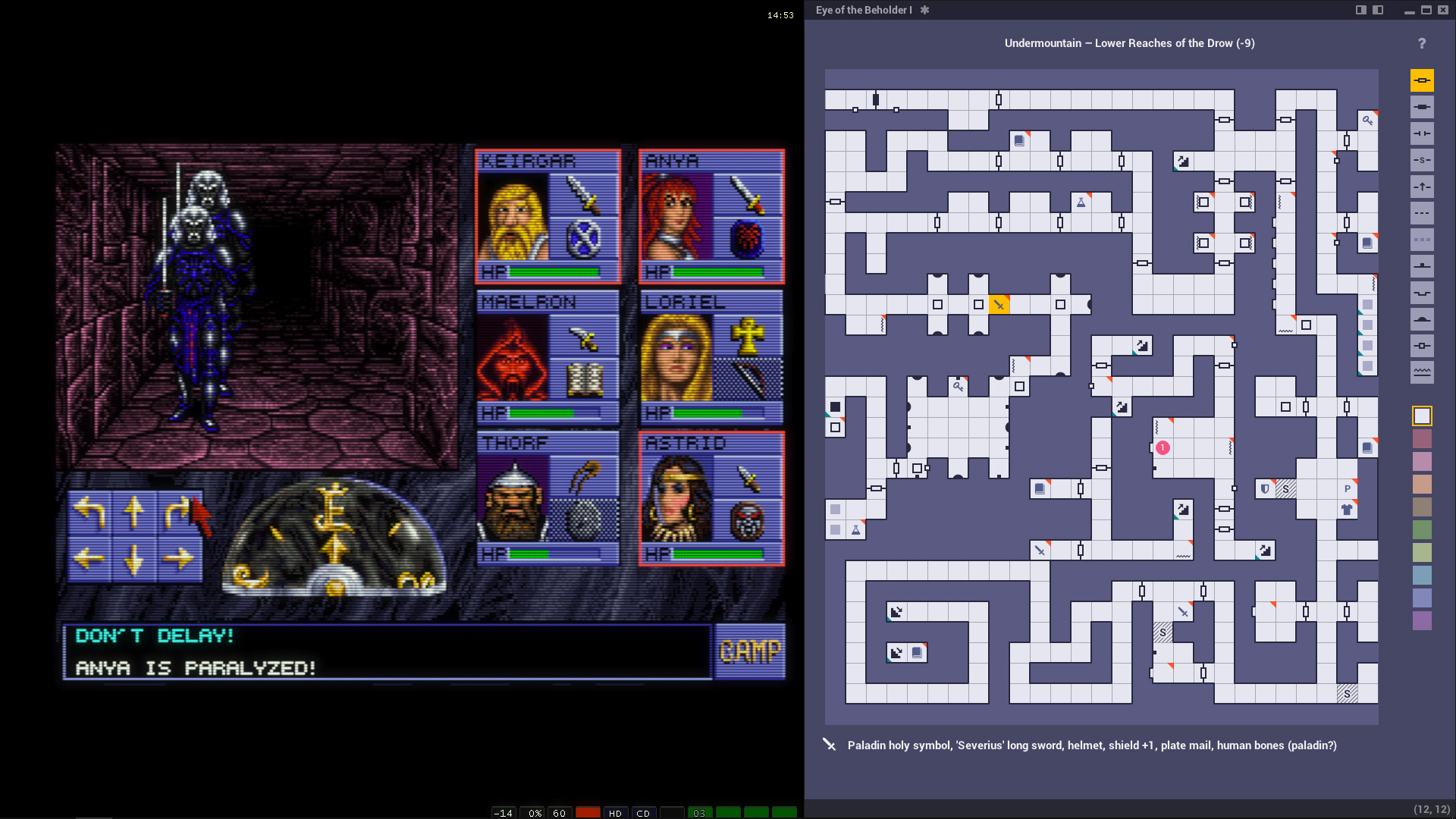Introduction¶
A few years ago, I decided to play some old-school dungeon crawlers that I had missed out on as a kid, so I embarked on a search for a software tool to replace traditional pencil-and-paper mapping. Unfortunately, none of the readily available options were to my liking. Spreadsheet applications, a popular choice among many cRPG enthusiasts, proved too fiddly and slow to work with. The dungeon mapping tools I could find were either overcomplicated, too bare-bones, unattractive, or lacked the type of keyboard-driven interface I was seeking.
And that last point is the crux of the matter. A grid-based cRPG with, let’s say, ten 32×32 dungeons amounts to a staggering 10,240 cells. Even if you can only explore 30–50% of those cells, that’s still three to five thousand little squares to map in a single playthrough. You can easily spend 20–40 hours completing a classic cRPG, often much longer! Because of this, it’s reasonable to expect the same level of efficiency and ergonomics from any dungeon mapping tool that one would from any professional editing software.
When I set out to design Gridmonger, my main goal was to make map creation an as efficient and enjoyable experience as possible. The basic idea was simple: most classic cRPGs are keyboard-driven, so mapping them should also be keyboard-driven. You wouldn’t even need to lift your fingers from the keyboard while simultaneously playing and mapping the game! This unique approach is what makes Gridmonger stand out from any other tool on the market, whether free or paid.
Let me stress this again: Gridmonger is not just another mapping tool. It’s a companion meant to be used while playing the game. While other programs might bedazzle you with a plethora of features, Gridmonger’s scope is purposefully kept small and focused. It aims to do one thing and do it exceedingly well:
Be the ultimate keyboard-driven grid-based cRPG mapping companion!
I do hope you will have as much fun mongering grids with the program as I had developing it!

Gridmonger in action — playing and mapping Eye of the Beholder I
